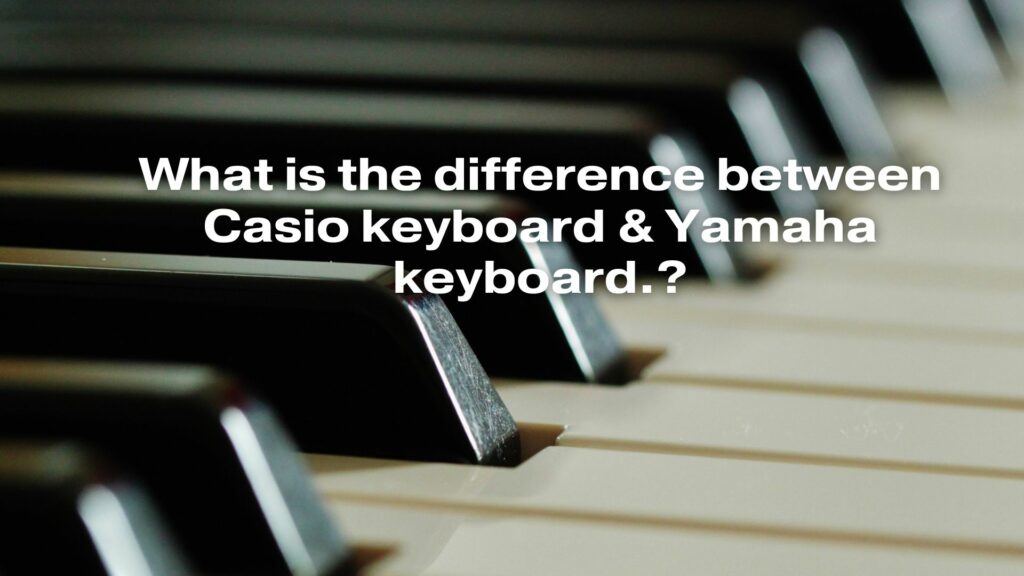Casio and Yamaha are two well-established brands in the world of musical instruments, and both offer a wide range of keyboards catering to different needs and preferences. While they share some similarities, there are key differences between Casio and Yamaha keyboards that can significantly impact your choice when selecting an instrument. In this article, we will explore some of the most important distinctions to help you make an informed decision.
- Sound Quality:
Yamaha is renowned for its superior sound quality, particularly in its digital pianos. The brand has a long history of crafting excellent instrument sounds, especially authentic and expressive piano tones. Yamaha uses Advanced Wave Memory (AWM) or Pure CF Sound Engine technology in their keyboards, which results in remarkable sound fidelity. Casio, on the other hand, offers good sound quality, with many of its models featuring the Acoustic and Intelligent Resonator (AiR) sound technology. While Casio keyboards provide realistic tones, Yamaha is generally considered to have a slight edge in sound quality.
- Key Action and Feel:
Both Casio and Yamaha offer keyboards with a variety of key actions, from fully weighted to semi-weighted and non-weighted keys. Yamaha’s weighted keys tend to simulate the feel of acoustic pianos more accurately, which is especially important for pianists. Casio also provides excellent key action and responsiveness, making them suitable for a range of players, including beginners and more advanced musicians.
- Educational Features:
Both brands include educational features in their keyboards. Yamaha offers the Yamaha Education Suite (YES) system, which is beneficial for beginners. It includes interactive lessons and practice exercises to help learners progress at their own pace. Casio keyboards often come with a step-up lesson system, suitable for beginners as well.
- Affordability:
Casio is often associated with providing budget-friendly options without compromising on quality. This makes Casio keyboards a great choice for beginners and those on a tighter budget. Yamaha, while offering models at various price points, also caters to professional musicians and has a reputation for higher-end keyboards with premium features, which may be costlier.
- Variety of Voices and Features:
Both brands offer a wide range of instrument voices and features. Yamaha keyboards often provide a more extensive selection of voices, including those modeled after acoustic instruments. This makes them versatile for various music genres and experimentation. Casio keyboards also offer a variety of voices, suitable for different music styles and creativity.
- Build Quality and Durability:
Yamaha and Casio both produce keyboards with solid build quality, ensuring they can withstand the rigors of practice and performance. Some higher-end Yamaha models may offer more durability and sturdiness, making them suitable for stage use.
- Innovation and Technology:
Yamaha has a long history of innovation in the world of musical instruments and is known for pioneering technologies. Casio is also recognized for incorporating innovative features into their keyboards. Both brands are continually evolving, so it’s essential to consider the latest models when making your choice.
Conclusion
The decision between Casio and Yamaha keyboards depends on your specific preferences and needs. If sound quality, authenticity, and a wide range of voices are your top priorities, Yamaha may be the better choice. If you are on a budget or looking for an affordable option that still offers quality, Casio is a solid contender.
It’s important to try out keyboards from both brands to see which one feels and sounds better for your individual needs and musical goals. Ultimately, the best keyboard for you is the one that aligns with your personal preferences and helps you enjoy your musical journey to the fullest.


